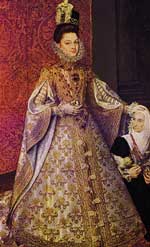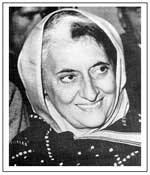
Famous Women of the World
Queen Isabella of Spain
 Isabella I (1451–1504), queen of Castile, called la Catolica ("the
Catholic"), and a sponsor of the voyages of Christopher Columbus. She was the daughter of John II of Castile
and Leon by his second wife, Isabella of Portugal. In 1469 Princess
Isabella I (1451–1504), queen of Castile, called la Catolica ("the
Catholic"), and a sponsor of the voyages of Christopher Columbus. She was the daughter of John II of Castile
and Leon by his second wife, Isabella of Portugal. In 1469 Princess
Isabella married Ferdinand of Aragon, known also as Ferdinand
V, the Catholic. On the death of her brother, Henry IV, Isabella and Ferdinand jointly succeeded (1474) to the throne of
Castile and León. Isabella's succession was contested, however, by Alfonso V of Portugal, who supported the claim of Henry's
daughter Juana la Beltraneja. Alfonso attacked Castile and León but was defeated by the Castilian army in 1476. Three
years later Ferdinand succeeded to the throne of
Aragón. This union of the two main panish kingdoms laid the foundation of
Spain's future greatness. They had five children, including Catherine of Aragon, the first wife of Henry VIII of
England, and Joanna the Mad, who was the mother of Charles V, king of Spain and Holy Roman Emperor. Isabella and her husband
(known together as "the Catholic kings") are remembered for initiating the Inquisition in 1478, for completing the
reconquest of Spain from the Moors and for their ruthless expulsion of the Spanish Jews, both in 1492. That same year they sponsored
Christopher Columbus's voyage, which led to the creation of the overseas Spanish colonial empire, bringing great wealth and
power to Spain.
Indira Gandhi
 Indira Nehru Gandhi was born on November 19, 1917 and would be the only
Indira Nehru Gandhi was born on November 19, 1917 and would be the only
child of Jawaharlal and Kamala Nehru. Being influenced and inspired by her parents, Indira Gandhi rose to power in India
and eventually became prime minister. She dedicated her life to progress in her country despite the overwhelming
problems and challenges she encountered.
Her road to power and politics started when she turned twelve years of age.
During the time of British imperialism, many Indian National Congress workers from Allahabad did not know when or if the British
would arrest them or search their homes. In order to find out when this would occur, the Monkey Brigade was formed.
Although Indira claimed to have thought of the idea, some asserted that the Monkey Brigade was the idea of the Congress. In any
event, Indira became the leader of this children's group whose purpose was to help end British control in India. Being its
leader, she delivered speeches while other children actually warned the people who were going to be arrested. The Congress
figured that the British would not suspect children of participating in such involvement. Although some deemed it a joke, Indira
took her job very seriously. One of the most significant actions of the Monkey Brigade involved Indira. The Congress
party's top officials were organizing a civil disobedience movement. After the meeting, the documents containing the plans
of the movement were placed in the trunk of a car with Indira in the back seat. Before the car was ready to leave the
area, a police inspector stopped the car in order to search it. However, Indira pleaded with him not to inspect the car because
the delay would cause her to arrive late at school. Fortunately, the inspector believed her and the car was not searched.
In 1938, Indira finally joined the Indian National Congress Party, something she always longed to do. Soon afterwards in 1942,
she married journalist Feroze Gandhi to whom she eventually bore two sons.
Soon after the couple was married, they were sent to prison on charges of subversion by the British. Her first and only
imprisonment lasted from September 11, 1942 until May 13, 1943 at the Naini Central Jail in Allahabad.
Fortunately, India won its independence from Britain in 1947. In that same year, Indira's father Jawaharlal Nehru became prime
minister. Since her mother had died in 1936, Indira acted as hostess and confidante and traveled with Nehru to meet famous
political figures. Later in 1959, Gandhi became the fourth woman elected president of the Indian National Congress. Five years
later in 1964, the then Prime Minister Lal Bahadur Shastri appointed Indira Gandhi as minister of information and
broadcasting. This position was the fourth highest ranking position in the Cabinet. Many
Indians were illiterate. Therefore, radio and television played a major part in informing them. As minister, she most importantly
encouraged the making of inexpensive radios and started a family planning program.
After Shastri's death in 1966, Indira Gandhi served as prime minister until India held the next election. She won that election,
and in 1967, became the first woman ever elected to lead a democracy. In 1971, Gandhi was re-elected by campaigning with
the slogan "Abolish Poverty." However in 1975, Gandhi was found guilty of violating election laws. Later, the conviction was
overturned by the Supreme Court of India. Also, to control population growth, Gandhi implemented a voluntary sterilization
program. As a result, adversaries criticized her and her administration in general. To secure her power and because of
escalating riots, on June 26, 1975, Indira Gandhi declared a state of emergency which limited the personal freedom of Indians.
Also, she ordered the arrests of the main opposition leaders. In her opinion, she declared an emergency for the good of India.
In 1977, she was voted out of office but regained her position as prime minister in 1980.
Unfortunately on October 31, 1984, Indira Gandhi's Sikh bodyguards assassinated her. They did so to avenge the storming of
the Golden Temple in Amritsar. Gandhi ordered the storming in June because of terrorist activity.
As prime minister, Gandhi tried to improve the lives of Indians. Her main accomplishments were improving relations with the
Soviet Union and victory in the 1971 war with Pakistan. Also in 1971, India sent its first satellite into space. Economically,
Indira Gandhi led India to one of the fastest growing economies in the world toward the end of her time as prime minister.
T